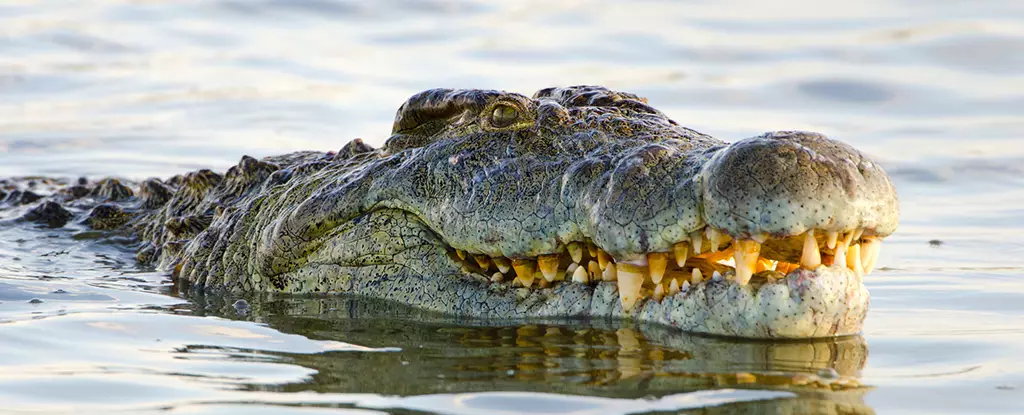Crocodiles have long fascinated both researchers and the general public, not only for their predatory prowess but also for their unique physical characteristics, especially their distinctive smiles. The way these reptiles develop their prominent head scales has sparked considerable scientific inquiry, leading to new revelations that delve deep into the embryology of these ancient creatures. Initially, studies suggested that both the scales and the skin formations were largely influenced by factors similar to those seen in mammals and birds. However, ongoing research is now unveiling the complexity that underpins the formation of a crocodile’s unique appearance.
One of the significant challenges in studying crocodile development lies in examining what occurs within the egg. The Laboratory of Artificial and Natural Evolution (LANE) in Geneva has made strides in this domain. Researchers led by Michel Milinkovitch began to investigate how the scales on a crocodile’s head form and differ from other species. They found that the embryonic configuration includes specialized skin structures known as placodes, from where these features grow. The arrangement of these placodes is influenced by biochemical patterns described as Turing patterns—an intricate dance of genes and chemical interactions.
Previously, scientists believed that tensile strain during growth caused the distinctive wrinkles and folds of a crocodile’s head. However, recent findings have conflicted with this notion, demanding a more nuanced understanding of the forces at play.
The breakthrough came with the revelation that crocodile head scales form through compressive mechanical instabilities rather than tensile stress. Initially, embryos present a smooth jawline, which progressively develops into creased and irregular shapes as both skin and bone evolve in tandem. This phenomenon can be likened to how certain materials warp or bend under pressure. By injecting embryos with epidermal growth factor (EGF), researchers sought to observe changes in scale development. This manipulation enhanced the stiffness of the skin and sped up its growth, revealing a fascinating transformation in how scales formed—leading to the futuristic pattern that resembles the characteristics of a closely related species, the caiman.
The study also emphasizes an important aspect of crocodilian development: the varying growth rates of skin and bone. The skin, in its rapid expansion, often outpaces the growth of the skull beneath it, which results in the formation of folds that are markedly different from those observed in humans. Instead of stretch marks from rapid growth, crocodiles exhibit skin that carries a loose, convoluted appearance akin to the folds seen in certain dog breeds, like the shar pei. This adds an intriguing layer to our understanding of how evolution tailors features within a species, with different crocodilians showing variations based on their unique embryonic growth processes.
The findings have broader implications for evolutionary biology, suggesting that the diverse head-scale patterns among crocodilians stem from selective pressures acting on skin growth during embryogenesis. This research encourages a reevaluation of how we understand animal development, suggesting that even minute differences within developmental biology can offer insight into evolutionary adaptations. As scientists delve deeper into these processes, they uncover the remarkable adaptability and diversity of life forms.
The study of crocodile embryology not only provides answers to longstanding questions about their physical characteristics but also showcases the sophistication of nature’s designs. As researchers continue to investigate these mechanical and biochemical interactions, we can expect more discoveries that unravel the secrets behind not just crocodiles, but potentially other species as well. The hunt for knowledge in the realm of biology remains an ever-evolving journey, revealing the intricate connections that define life on Earth.

Leave a Reply